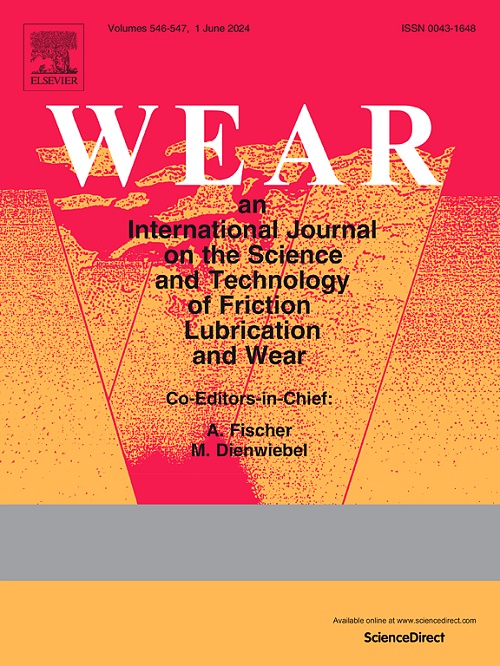Coating material loss and surface roughening due to leading edge erosion of wind turbine blades: Probabilistic analysis
IF 5.3
1区 工程技术
Q1 ENGINEERING, MECHANICAL
引用次数: 0
Abstract
This study presents a novel approach for the prediction of random erosion roughness patterns of leading edge protection coatings for wind turbine blades. The predictions can be used for determining the effect on aerodynamic performance and provide decision support for repairs. The model removes coating material fragments from the surface of the blade based on a Weibull failure probability function. Input from rain erosion tests of a coating material are used to fit the parameters of the failure probability function and the predictions are validated with data from available literature. Predictions for the time required to reach full breakthrough of the coating layer are made for tip speeds between 90–120 m/s. For tip speeds larger than 100 m/s, the examined coating is predicted to experience significant damage within a few months after installation. The sequence of rain events with different rain intensities was also found to have a significant effect on the amount of surface damage. Using droplet size distributions based on measurements was predicted to lead to different coating lifetimes than when using Best’s droplet size distribution. Measurements of erosion craters from rain erosion test samples were used to define a size distribution for failed coating fragments. A machine learning approach for automatic parameter fitting based on erosion depth data from tests is also presented.
求助全文
约1分钟内获得全文
求助全文
来源期刊

Wear
工程技术-材料科学:综合
CiteScore
8.80
自引率
8.00%
发文量
280
审稿时长
47 days
期刊介绍:
Wear journal is dedicated to the advancement of basic and applied knowledge concerning the nature of wear of materials. Broadly, topics of interest range from development of fundamental understanding of the mechanisms of wear to innovative solutions to practical engineering problems. Authors of experimental studies are expected to comment on the repeatability of the data, and whenever possible, conduct multiple measurements under similar testing conditions. Further, Wear embraces the highest standards of professional ethics, and the detection of matching content, either in written or graphical form, from other publications by the current authors or by others, may result in rejection.
 求助内容:
求助内容: 应助结果提醒方式:
应助结果提醒方式:


